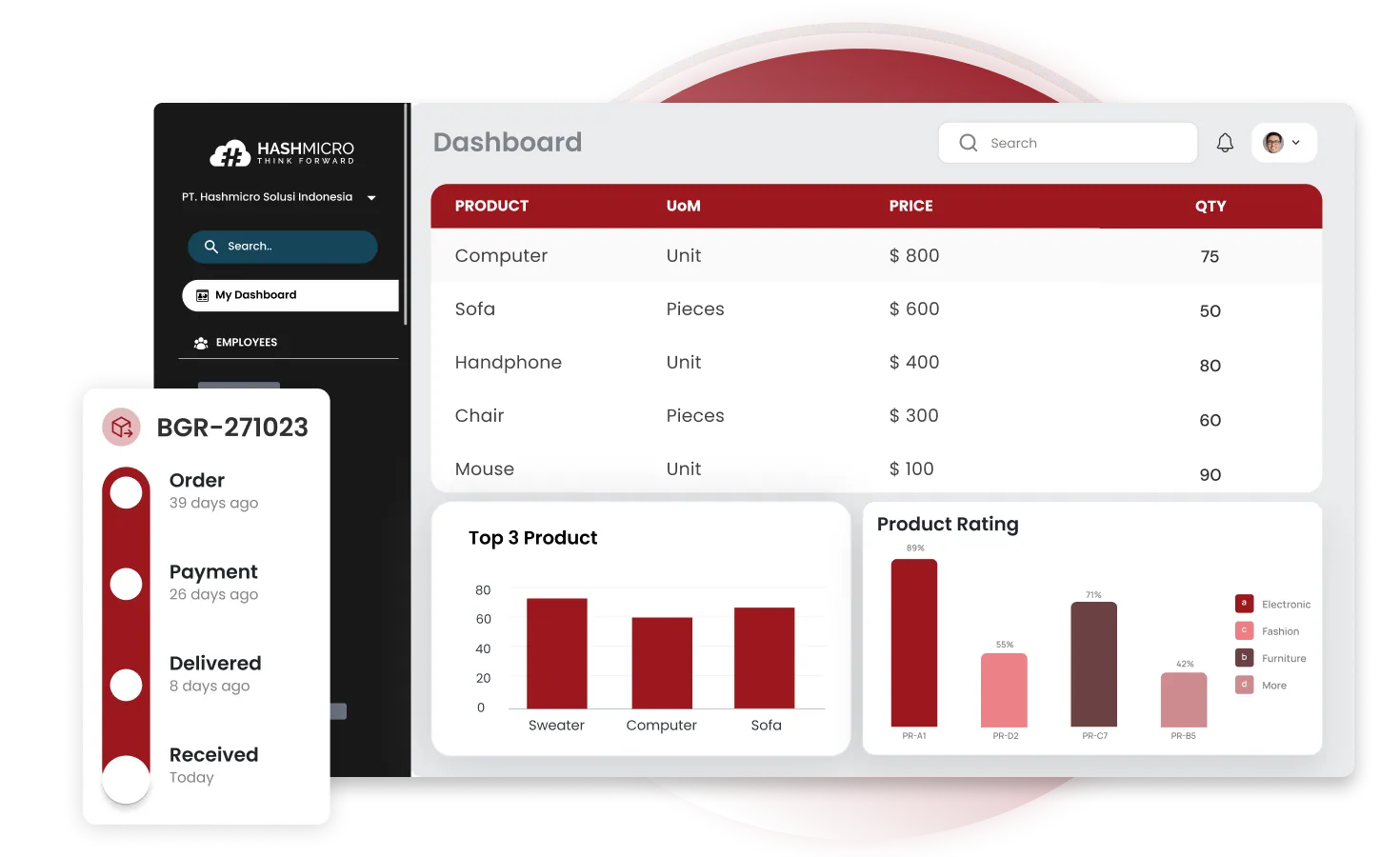Procurement risk is a problem that can arise when companies buy goods and services. It is leading to financial losses, supply chain disruptions, and damage to reputation if not managed well in the company.
In the Philippines, these potential procurement risk can be challenging due to market changes, supplier reliability, and regulatory issues. Managing these risks is essential to ensure your business in the Philippines runs smoothly and avoids harmful impacts.
As concrete proof, Hewlett-Packard (HP) over the past six years has saved more than $425 million after managing risk in business with procurement software. With that said, are you sure you don’t anticipate procurement risk in the same way? Sayang naman!
That is why, this article will explain procurement risk and share effective ways to reduce it. Keep reading to learn how to protect your procurement processes and strengthen your business in the dynamic Filipino market.
Key Takeaways
|
Table of Content
Content Lists

What is Procurement Risk?
Procurement risk is the potential for issues to arise while purchasing goods and services that are essential for a company’s operations. These risks can manifest in various forms, such as supplier reliability issues, price volatility, quality control problems, and regulatory compliance challenges.
For businesses in the Philippines, these potential procurement risk are particularly significant due to the dynamic market environment and varying supplier performance. Understanding procurement risk is the first step in ensuring your company’s supply chain remains robust and efficient.
By implementing a strong procurement system, you can identify potential risks early, develop mitigation plans, and ensure a continuous supply of high-quality materials and services. This approach protects your business from unexpected setbacks and enhances your operations.
The Importance of Procurement Risk Management You Should Know
 Procurement risk management is vital for ensuring the stability and success of any business. For companies in the Philippines, effectively managing these risks can mean the difference between smooth operations and costly disruptions.
Procurement risk management is vital for ensuring the stability and success of any business. For companies in the Philippines, effectively managing these risks can mean the difference between smooth operations and costly disruptions.
Here are key reasons why procurement risk management is essential for Filipino businesses:
1. Financial stability: Proper risk management helps avoid unexpected costs and financial losses caused by supplier failures or market volatility. This stability is crucial for maintaining healthy profit margins.
2. Supply chain continuity: By identifying and mitigating risks early, businesses can ensure a consistent supply of necessary goods and services, preventing operational delays and production halts.
3. Regulatory compliance: In the Philippines, staying compliant with local regulations is imperative. Effective risk management ensures that procurement processes adhere to all legal requirements, avoiding penalties and legal issues.
4. Quality assurance: Procurement and risk management ensures that the quality of goods and services meets the company’s standards, thereby maintaining customer satisfaction and brand reputation.
5. Competitive advantage: Companies that manage procurement risks effectively are better positioned to respond to market changes and opportunities, giving them a competitive edge over less-prepared competitors.
7 Most Common Procurement Risks in the Philippines
Hay naku! Did you know that procurement risk can significantly harm your business?
By causing financial loss, operational disruption, and damaging a company’s reputation, risk in procurement management can cost your business millions of pesos. Therefore, know the other 7 common purchasing risks of Philippine companies below:
1. Supplier reliability: Issues with supplier reliability can lead to delays and inconsistent product quality, affecting your production schedule and customer satisfaction.
2. Price volatility: Fluctuations in market prices can disrupt your budget and lead to unexpected financial strain, making it hard to maintain profitability.
3. Regulatory compliance: Non-compliance with regulations can result in penalties, legal issues, and operational disruptions. Therefore, if you want to know if your procurement system synergizes with local regulations, you can try the free demo first.
4. Logistical challenges: Transportation and logistics issues, such as port congestion and inadequate infrastructure, can delay deliveries and increase costs.
5. Political and economic instability: Political changes and economic fluctuations in the Philippines can impact supply chains and create uncertainty in procurement processes.
6. Environmental risks: Natural disasters like typhoons and floods can disrupt supply chains, causing delays and increasing costs for businesses.
7. Cybersecurity threats: As businesses increasingly rely on digital procurement systems, cybersecurity threats become a significant risk, potentially leading to data breaches and operational downtime.
By understanding and addressing these common procurement risks, businesses in the Philippines can enhance their operational efficiency, ensure compliance, and maintain a competitive edge in the market.
How to Mitigate Procurement Risk So Your Business Grows Fast
 Mitigating procurement risk is a step you can take to solve business challenges and can be done from your desk. But how? Huwag mag-alala, here are the steps you can do from now on.
Mitigating procurement risk is a step you can take to solve business challenges and can be done from your desk. But how? Huwag mag-alala, here are the steps you can do from now on.
a. Develop strong supplier relationships
Building reliable partnerships with your suppliers is crucial. Strong relationships ensure consistency in delivery and quality, helping you avoid disruptions and maintain a steady supply chain.
b. Diversify your supplier base
Avoid reliance on a single supplier by sourcing from multiple vendors. This diversification reduces the impact of any single supplier’s failure, ensuring that your operations continue smoothly even if one supplier encounters issues.
c.Implement robust contracts
Clearly outline terms, conditions, and penalties in your contracts to protect your business interests. Well-drafted contracts provide a legal safety net, helping to mitigate risks related to non-compliance and supplier performance.
d. Conduct regular risk assessments
Periodically evaluate potential risks in procurement management to identify and address vulnerabilities. Regular risk assessments help you stay ahead of potential issues and develop strategies to manage them effectively.
e. Leverage technology
The benefits of procurement system for your business are to streamline processes, improve visibility, and proactively manage risks. Technology can provide real-time data, analytics, and automation to enhance your risk management strategies.
Are you curious about which e-procurement may be your best choice to overcome procurement risks? Get to know it below!
HashMicro’s Procurement Software as Your Trusted Partner to Mitigate Procurement Risks
 HashMicro has been established as a leader in the software industry, providing innovative solutions to businesses across Southeast Asia. Founded with a vision to simplify business processes, HashMicro helped over 1,750 companies to streamline their operations, including procurement processes.
HashMicro has been established as a leader in the software industry, providing innovative solutions to businesses across Southeast Asia. Founded with a vision to simplify business processes, HashMicro helped over 1,750 companies to streamline their operations, including procurement processes.
HashMicro’s procurement system for the Philippines stands out for its comprehensive features and user-friendly interface. By offering a free demo, HashMicro allows potential users to experience firsthand how procurement risk management can transform their business operations.
Some of HashMicro’s procurement risk management features are like:
- PO, RFQ & PR management: Business risk management streamline your purchase orders, requests for quotations, and purchase requisitions in one integrated platform, reducing administrative workload and improving accuracy.
- PR approval management: Automate and track purchase requisition approvals with ease, ensuring compliance and speeding up the approval process.
- Online portal for suppliers: Facilitate seamless communication and collaboration with suppliers through an online portal, enhancing transparency and efficiency.
- Vendor/supplier rating: Evaluate and rate your vendors based on performance metrics, helping you make informed decisions and maintain high standards.
- Blanket order management: Manage long-term agreements with suppliers efficiently, ensuring consistent supply and better pricing.
- Landed cost calculation: Accurately calculate the total cost of imported goods, including shipping, taxes, and duties, to maintain precise financial records.
With these robust features of business risk management, HashMicro’s procurement software handles procurement risks effectively. Connect with HashMicro’s expert team or try a free demo to see how its procurement software can help your business navigate procurement challenges effortlessly.
Conclusion
Effective procurement risk management is crucial for maintaining smooth operations and driving growth. Understanding and mitigating common procurement risks in the Philippines can prevent costly disruptions and enhance supply chain resilience.
HashMicro’s procurement software offers comprehensive solutions to solve those challenges in your business. Trusted by over 1,750 businesses, HashMicro is known for its innovative and customer-centric approach.
To protect your business from procurement risks and improve efficiency, explore HashMicro’s procurement software. Connect with HashMicro’s expert team or try a free demo to see how its solutions can transform your procurement processes.

FAQ About Procurement Risk
-
-
What are the four 4 sources of risk in procurement?
There are four primary sources of risk in procurement: the supplier, the buyer, the contract, and the implementation process. Among these, the supplier is the most critical source of risk since they are responsible for providing the goods or services being purchased.
-
What are the internal and external risks in procurement?
Internal risks originate from your business operations, employees, project requirements, and procurement procedures. External risks arise from your supply chain due to global events, political developments, vendor relationships, and external factors.
-
What is strategic risk in procurement?
Operational risk involves the daily activities of the procurement process, including potential cost overruns, delays, and quality problems. Strategic risk pertains to long-term procurement decisions and strategies, such as choosing suppliers and negotiating contracts.
-
{
“@context”: “https://schema.org”,
“@type”: “FAQPage”,
“mainEntity”: [{
“@type”: “Question”,
“name”: “What are the four 4 sources of risk in procurement?”,
“acceptedAnswer”: {
“@type”: “Answer”,
“text”: “There are four primary sources of risk in procurement: the supplier, the buyer, the contract, and the implementation process. Among these, the supplier is the most critical source of risk since they are responsible for providing the goods or services being purchased.”
}
},{
“@type”: “Question”,
“name”: “What are the internal and external risks in procurement?”,
“acceptedAnswer”: {
“@type”: “Answer”,
“text”: “Internal risks originate from your business operations, employees, project requirements, and procurement procedures. External risks arise from your supply chain due to global events, political developments, vendor relationships, and external factors.”
}
},{
“@type”: “Question”,
“name”: “What is strategic risk in procurement?”,
“acceptedAnswer”: {
“@type”: “Answer”,
“text”: “Operational risk involves the daily activities of the procurement process, including potential cost overruns, delays, and quality problems. Strategic risk pertains to long-term procurement decisions and strategies, such as choosing suppliers and negotiating contracts.”
}
}]
}



































